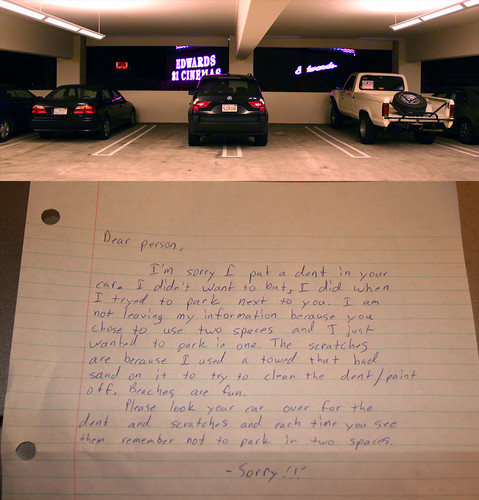Monday, September 29, 2008
rooms
I always find it frustrating to try to ascribe work to some particular category, because work is so many things at once. Labels and categories are restraints and in terms of artwork (as many artists would agre), open-endedness is preferable. I would offer that I, like many others, am a constant shifting back and forth between the bedroom and the living room, perhaps a hallway. I suppose there has to be some front and performance, something fixed, some constants. But how can they really be constants? Constants change depending on the audience and the surrounding circumstances. Entertaining in the living room serves to benefit oneself and others, to fulfill a role in society as well as some . So the living room becomes necessary to learn and to teach. Sincere and cynical attempts at entertaining certain others, as well as an imagining of oneself as something else within parameters is healthy. Its purpose fluctuates depending on the circumstances; at times it is a reflection of aspirations, at others it is derived from some simulated or authentic necessity, and still other times serves as a source of twisted pleasure. Then there is the constant retreat back to the bedroom for introspection, to gather oneself, to reject certain aspects of the performance, reinforce others, perfect the act, sort it all out. Futile efforts to move furniture and items from the living room back to the bedroom and vice versa, and then abandoning such projects mid action are not uncommon. Many items remain in transit, boxed and unboxed in the hallway, deciding whether they should be in this room or that, or both. A nagging thought in the back of your mind that you might have to excuse yourself unexpectedly and never come back. Living room and bedroom converge to create a gray hallway that is the self.
Saturday, September 27, 2008
Wednesday, September 24, 2008
IN SEARCH OF THE AMAZING LIVING BEDROOM!
In a literal sense, there is very little difference between my living room and bedroom; they are part of the same homogeneous pile, flowing into one another via a trail of dirty socks. I would like if my art worked in this same way- a natural flow between the aesthetic of the processes (quite a mess) and the work itself (polished… well, buffed (to be more accurate)). My mind, my personality, my aesthetic does not always translate to my art. It is as though I am taking one object from the pile and placing it on the gallery wall as a representation of the mess. I need to be more intuitive, spontaneous in my art production and display.
Living Room, Bedroom
I want my work to be in the living room, leave the house all together, but I tend to hide in the bedroom. I have always made work that looks at a vast picture, a broad view of the world, but is still self-reflective in some ways. In the past, the studio has been very important to me. It is a bedroom of sorts, where I feel that I can block out the party in the living room and distract myself with something that may only matter and make sense to me. I contradict this by saying that I am an observer of landscapes and culture, someone that wants to make work about the world. As someone that often works in photography, I often bring my bedroom studio out into the world... but I still stayed inside it. What I want to do is allow myself to make work that says something about myself, but is also accessible by the people at the party. Breaking comfort zones may be the hardest part.
living room
According to this article, Goffman indicated that there are two kinds of fronts, one is that already established and the other one should be selected from several well-established choices by performers. It also means, we shall maintain an idealized impression. Then the question comes, “How to choose a proper one from them?” “To accentuate certain facts and conceal others” is the answer from Goffman. As a graphic designer, I always taught by my teacher to “Listen to the client” while “Keep your own standpoint.” The former one is the thing what you shall accentuate when performing as a designer and turns them out in works, such as hot topics, popular color which has already be asserted as the “avant-garde color”, the formulaic fonts. The most important rule is to obey the routine under the client’s fostered impression. Meanwhile, I also have to adjust my works considering the difference positions of clients and audiences.
I found the extent of how far you can keep your own standpoint, is strongly connected with the social occupation you attained. The social has a rigid stratification and inequality, and for different levels of position, the reality you’d like to represent is different. Thus, I think my works are more like “living room”
I found the extent of how far you can keep your own standpoint, is strongly connected with the social occupation you attained. The social has a rigid stratification and inequality, and for different levels of position, the reality you’d like to represent is different. Thus, I think my works are more like “living room”
Bedroom v. Living Room
In response to Goffman’s Presentation of Self in Everyday Life:
Goffman likens the bedroom of a home to the backstage of a theater, describing it as a place where the “actor” prepares him or herself and is not meant to be seen by the viewer. The living room is compared to the stage, where the viewer is allowed to see a carefully arranged space and articulated performance intended for consumption. In regards to my own art practice, I would say that most of the noise happens in the bedroom, or studio. I usually only let the viewer see the finished product, distilling the work down to a presentable visual, event, or performance. This is misleading, because, for me, the most exciting part of the art process is right in the middle, when I no longer care why I started on something and have no idea how I will finish it.
Goffman likens the bedroom of a home to the backstage of a theater, describing it as a place where the “actor” prepares him or herself and is not meant to be seen by the viewer. The living room is compared to the stage, where the viewer is allowed to see a carefully arranged space and articulated performance intended for consumption. In regards to my own art practice, I would say that most of the noise happens in the bedroom, or studio. I usually only let the viewer see the finished product, distilling the work down to a presentable visual, event, or performance. This is misleading, because, for me, the most exciting part of the art process is right in the middle, when I no longer care why I started on something and have no idea how I will finish it.
Our bedrooms are places of privacy where the true, unfiltered and unchecked versions of ourselves become visible. My work is the bedroom over the holidays, when I know people will be coming over. The bed is made, the clutter has been relatively organized, but I still have dirty clothes in the hamper and forgot to dust my dresser. I portray my fears, insecurities, observations, bitterness, and so on, but present it in a form of visual coding that has to be analyzed to fully be understood. Some people might come into the bedroom and see it as a clean room revealing secrets here and there. Those who snoop around will see the dirty laundry.
My interpretation of the metaphor is that the living room represents the exterior self that we consciously present to our chosen audience while the bedroom represents who we are in our most private, intimate, primal moments. I've been talking about a disconnect between the way I make art and the way I live my life. In other words, my artwork is the living room (or maybe it's the lawn) and I'm uncomfortable with that. The work comes from my observation of nature and a knowledge that people I don't know will see it. I create works that are esthetically pleasing to many people and have intimate detail, but are not particularly revealing of who I am. Rather than performing the role of artist, I want to communicate the way that I live, see and think. I'm hoping to move my artwork toward the bedroom, but still be selective about what moments are available to the viewer. That is to say, I'm not looking to expose every visceral and mundane detail of my existence through a Big Brother type of surveillance, but I am seeking to convey something intimate.
My work and where it comes from.
After reading Goffman’s Presentation of Self in Everyday Life I question whether any expression of self is more or less authentic than another. Who am I when performing my idealized self (in the “living room”)? Do I act out how I assume I am perceived or in opposition to it? Do my fronts of race, class, gender, etc. say something inherent about me or about the audience’s expectations of me? If my audience is equally distracted by these questions can we ever have a mutual conversation? My work isn’t literal. It (maybe) doesn’t disclose my personal fronts, and it might seem that I am removing all personal information from it. But my goal is to find presence in absence. I believe that there are more basic human fears and desires that show through my work. It’s a way to better express feelings that I have been unable to do with words, an effort at being open and intimate with a stranger. And my ultimate hope is that we might shed our fronts of difference, become permeable for a moment, and have a slight glimpse of what it’s like to be someone else. My work is a conversation on the porch late at night, after a rough week and few drinks.
Tuesday, September 23, 2008
rooms
I was trying to avoid posting this first, but was worried I'd forget tomorrow:
My work is sleeping on the couch. Intimacies are left out but there is still an attempt to tidy up before breakfast. Typically private content is brought out into public light to be exposed, rearranged, and presented as solutions to emotional problems. Heaps of logical data solving an emotional issue would seem to be a goal of the left-brain; that is, if the elements were not brought together in a fantasy. In keeping with the metaphor, the drapes were left open to the act in both rooms, and they enjoy it that way. The unconscious is fundamentally honest, just lacking the details to prove itself beyond a personal understanding. The consequences of creating these solutions are not always discernable beyond those who know the “secret” function: a list of citations, physical embodiments to personify, the projection of wonder onto fear and so on. What is clear is that they are evidence of a sentient something, a characteristic as valuable as the liar’s tic or choice of guest soaps.
My work is sleeping on the couch. Intimacies are left out but there is still an attempt to tidy up before breakfast. Typically private content is brought out into public light to be exposed, rearranged, and presented as solutions to emotional problems. Heaps of logical data solving an emotional issue would seem to be a goal of the left-brain; that is, if the elements were not brought together in a fantasy. In keeping with the metaphor, the drapes were left open to the act in both rooms, and they enjoy it that way. The unconscious is fundamentally honest, just lacking the details to prove itself beyond a personal understanding. The consequences of creating these solutions are not always discernable beyond those who know the “secret” function: a list of citations, physical embodiments to personify, the projection of wonder onto fear and so on. What is clear is that they are evidence of a sentient something, a characteristic as valuable as the liar’s tic or choice of guest soaps.
Monday, September 22, 2008
Sunday, September 21, 2008
Wednesday, September 17, 2008
JR from "28 Millimeters" series
Tuesday, September 16, 2008
Wolfgang Tillmans, "New Family", 2001

Wolfgang Tillmans (German, b. 1968)
New Family, 2001
C-print
Collection of Phyllis Tuchman © Wolfgang Tillmans
TL.2007.74.42
What I love about Tillmans work is that he captures the poetic, the extraordinary, in the mundane. He shows how beautiful everyday things can be and is playful in his observations. His images and collections are accessible to people from non-art backgrounds and intellectually stimulating for artists, academics and collectors, as well.
Monday, September 15, 2008
Sunday, September 14, 2008
Monday, September 8, 2008
Subscribe to:
Posts (Atom)


















![[1150195283343_master1149848882599_r[1].jpg]](https://blogger.googleusercontent.com/img/b/R29vZ2xl/AVvXsEiy7_lmbBCkPMQPHTiJwiu28MPkArV35HjztLaeJbr29Zqf53n2WsBx9EnzDFYsq49c0MZAn-yNTn4842AAUG1mOKO5vBXWzMkTgV6ZxLvVvNziNhdjrRPd5j8xwVLYdjTkXJLRpPZWI4ek/s1600/1150195283343_master1149848882599_r%5B1%5D.jpg)









